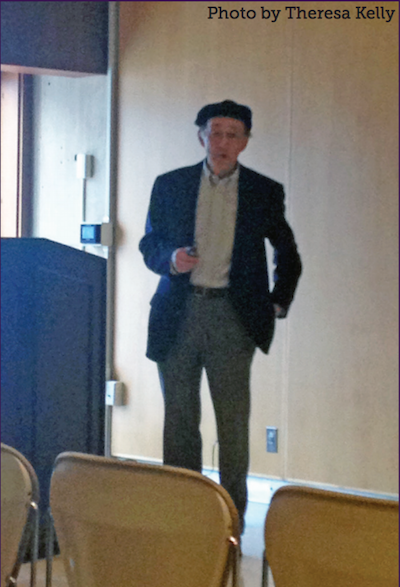On Monday, Feb. 23 at 4:15 p.m. A. H. Nishikawa gave his presentation “From Concentration Camps to Today’s Issues” in Sykes Ballroom C. When he was four years old, Nishikawa was interned in the Japanese-American internment camps during WWII.
During WWII, President Franklin Delano Roosevelt signed Executive Order 9066, which enabled the United States government to send around 120,000 Japanese-American citizens to internment camps. They had committed no crimes, but the United States government claimed that it was for the good of the war that they interned the Japanese-Americans.
There were 10 “relocation” camps and four DOJ detention centers throughout the country. They were located, primarily, in the West, though two camps were as far out as Arkansas. Most of the Japanese-American citizens who were interned lived in California.
Nishikawa’s family was ordered to the Salinas Assembly Center in March 1942. Later, they were relocated to the camp in Poston, Ariz. in July. Because of the camp in Poston, it actually became the third largest municipality in Arizona.
When Japanese-Americans were sent to the camps, their families were tagged, sent through a medical checkpoint, and their possessions were confiscated. Most photos from that time period are from government databases, as cameras were also confiscated.
Nishikawa, showing humor, showed a photo of a young girl with her family’s information on a tag around her neck. He said, “The only good thing was, they didn’t insist on tattooing the family’s name on your arm.” After a pause, he added, “That was a joke.”
The camps were broken into blocks and were surrounded by barbed wire fences. There were watchtowers and guards to ensure “protection,” though that was really just a front for keeping people in the camps. Each block had a recreation building, mess hall, laundry room, ironing room, a men’s restroom, a women’s restroom, and roughly ten barracks.
For people in the camps, some were allowed to become school teachers and others worked as mess hall cooks. Mess Hall cooks earned about $19 a month.
Nishikawa, interestingly, brought up the fact that his 70-year-old brother was born in the camps.
Some people did resist being in the camps. Though fighting back was dangerous, some people protested through committing arson in the camps. Mitsuye Endo, one internee, filed a writ of habeas corpus in June 1944. It went all the way to the Supreme Court, but he lost his case.
How did this kind of mass internment happen? Nishikawa explained that there were many anti-Asian-American sentiments in the United States.
The effects of internment did not end the second the Japanese-American people were released from the camps. After WWII, there was much emotional distress. Nishikawa explained that it was uncommon to want to talk about internment, and he had to convince his mother talk to him about it.
In 1991, internment victims received $20,000 as an apology for internment. The United States government officially apologized for internment.
At the end of the talk, people in the audience were allowed to ask questions. Nishikawa explained that several lessons can be learned from the unforgiveable event in American history. It was key for the community to organize. Preventing this type of injustice from happening again was crucial, and to do that, they needed to prevent laws like that from being passed in the first place.
Theresa Kelly is a third-year student majoring in English literature secondary education. She can be reached at TK780615@wcupa.edu. Emily Eyster is a third-year student majoring in political science. She can be reached at EE795177@wcupa.edu.

